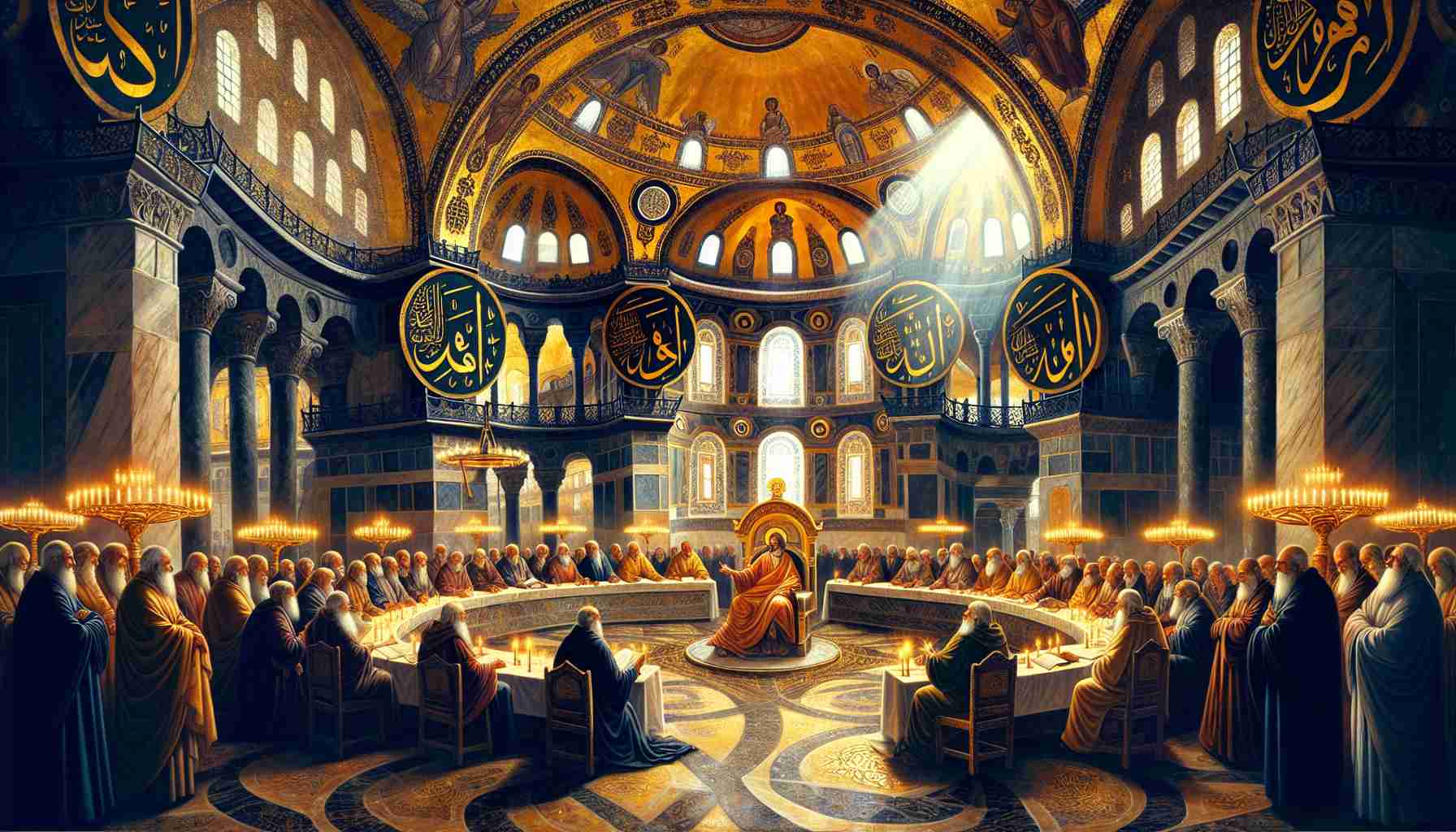

The sun rose over Constantinople in a shroud of incense and salt-laden mist, curling in from the Bosphorus like a whispered omen. Beneath the gleaming dome of the Hagia Sophia, the great church known to the faithful as the Holy Wisdom, men in solemn robes gathered—bishops, abbots, deacons—shoulders burdened with a weight older than empires. In mosaic-lit silence they passed beneath golden arches, their sandals whispering on inlaid marble floors as they took their seats before the imperial throne, empty for now but omnipresent in influence.
It was May 5, 553—the day the Second Council of Constantinople was convened.
The Emperor Justinian had summoned them, wielding both divine authority and imperial will, his heart set on unity in doctrine and strength in power. The Church groaned under fractures of old heresies, particularly Nestorianism, which echoed dangerously from Persia to the courts of Alexandria and Antioch. Questions once whispered now howled—was Christ two persons or one? Could God suffer? Was Mary truly Theotokos, God-bearer, or merely mother of the man?
At the edge of this thunder, Patriarch Eutychius of Constantinople adjusted his cope and watched hierarchs arrive from distant sees. Some bore scars of earlier councils—their tongues once washed in theological fire and flame. Others held new parchments, fresh accusations against the so-called “Three Chapters,” writings attributed to those whose doctrine skirted the very edge of blasphemy.
Justinian’s own presence loomed heavier than incense. His was a mind sharpened on law and theology alike, a ruler who prayed and legislated with equal force. His wife, Empress Theodora—though dead these nearly two years—still breathed subtly through the gathering. Once a champion of the Monophysites, who claimed Christ had only a divine nature, her will had pressed into Justinian’s political calculus. Neither Rome nor Constantinople could afford more fragmentation. If the Church could not agree on Christ, how could it carry His message to the world?
The council began not in conquest but in confusion. Declarations disputed, definitions dissected. Would condemning the Three Chapters mean undermining the Council of Chalcedon, which had declared Christ’s double nature—fully God and fully man? Every word weighed eternity. One bishop from Scythia Minor, trembling with age, leaned upon his staff and murmured, “It is not enough to silence a heretic. Truth must sound clearer for it.”
Then came readings—long and arduous—from Theodoros of Mopsuestia’s writings, phrases where Christ seemed parted from God as water from oil. Murmurs arose. Shadowed corners bristled with argument. Outside, crowds waited in basilicas and baths, ears hungry for the outcome. A new Constantinople had been promised upon this decision; the soul of the Empire trembled in balance.
On the third day, a passage from the Gospel of John was read aloud: “When the Spirit of truth comes, he will guide you into all the truth” (John 16:13). For a moment, like sunrise on stone, silence hushed the hall. The bishops looked not upon each other, but above—to the Christ enthroned in mosaic in the apse of the Hagia Sophia, hand raised in blessing, Scripture opened in eternal truth.
By decree, the council condemned the Three Chapters, reaffirming the doctrines of Chalcedon, and declaring that Christ was, and is, one Person with two natures—divine and human—unmixed, unconfused, indivisible. Heresy was not merely banished; it was outshone by the clarity of revealed truth.
Outside, the bells of the city rang out—some in joy, others in protest. Western bishops had not been fully present, and questions loomed whether Rome would accept the council’s verdict. But within the walls of the basilica, the Church had spoken. Like a great tree split by lightning and still standing, the faith pressed on.
Eutychius lingered after others had gone, standing within the shadows of intricate capitals and gold-tipped mosaics. The silence of the Hagia Sophia thrummed with unseen wings. He thought of Christ—walking upon Galilean hills, speaking words that confounded and healed, arrested and resurrected. How strange and wondrous, that five centuries later, men still wrestled with His identity, like Jacob at the Jabbok, refusing to let the angel go until the blessing came.
Faith did not flee controversy. It stepped into it, arms wide, trusting not in argument alone but in the Spirit’s guiding breath.
Justinian would carry the decrees like imperial banners across the empire. Some would resist. Others would rejoice. But the seed had been planted—even in debate, truth had a gardener.
And long after the council ended, when the bishops had laid down miters and brethren their bitter letters, the words of John still echoed in the iron bones of the Church: He will guide you into all truth.
In time, the Hagia Sophia would shimmer beneath both crosses and crescents, its marbles trodden by saints and sultans. Doctrines would fracture and reform like coastlines before the tide. But what began in that spring of 553—cloaked in incense and argument—was a declaration not just of theology, but of faith’s endurance.
The living Christ, mysterious and indivisible, had been confessed again beneath heaven's dome—defied by some, adored by others, but never ignored.